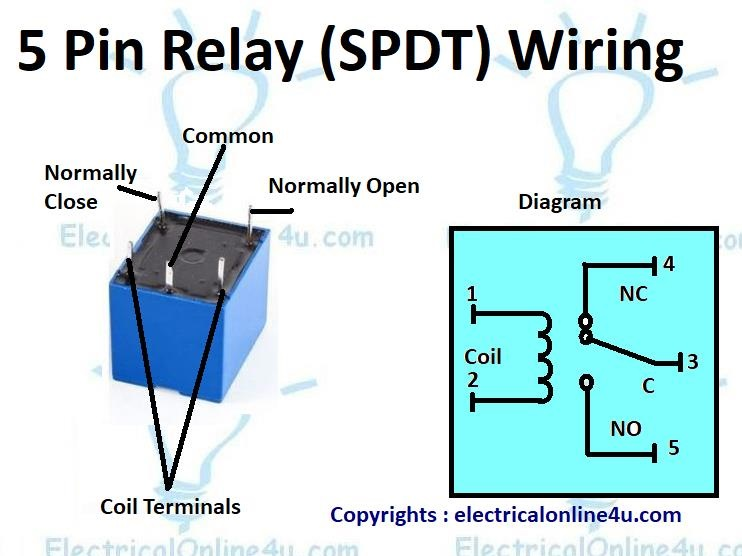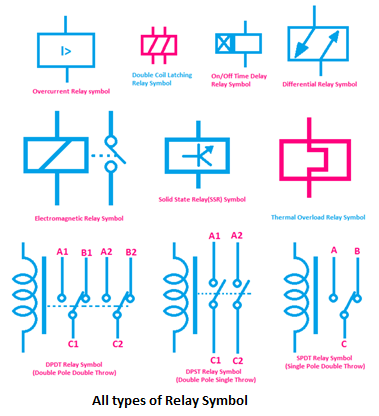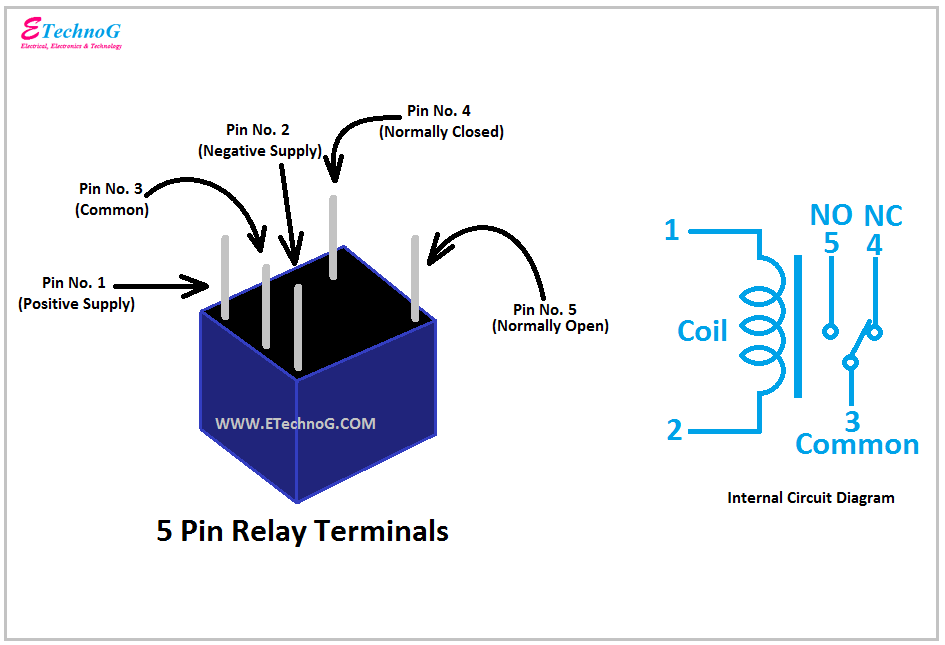Ever find yourself staring at a circuit diagram, feeling a bit lost in a sea of symbols? Don't worry, it happens to the best of us. One common symbol that can cause confusion is the normally open (NO) relay contact. Understanding this little guy is key to deciphering circuit logic and building functional electronic systems.
The normally open relay symbol represents a contact that's, well, normally open. This means that when the relay coil is not energized, no current can flow through the contact. It's like an open door – nothing can pass through until the relay coil gets powered up, effectively "closing" the door.
Relay schematics are the language of electrical control systems, and the normally open contact is a fundamental part of that language. Imagine trying to communicate without knowing basic vocabulary – that's what it's like trying to understand circuits without grasping the meaning of NO relay symbols. These symbols allow us to represent complex switching operations in a concise and standardized way.
The normally open relay contact's history is intertwined with the development of relays themselves, dating back to the early 19th century. As electrical systems became more complex, the need for reliable switching mechanisms grew, leading to the invention of the electromagnetic relay. Along with this came the development of standardized symbols to represent relay functions, including the NO contact.
One of the biggest challenges in using normally open relay contacts is ensuring they operate as intended. A common issue is contact bounce, where the contact makes and breaks rapidly upon closing, causing spurious signals. This can be mitigated by using debouncing circuits or software techniques. Another potential problem is contact erosion due to arcing, particularly when switching high currents or voltages. Choosing the right relay for the application is essential to avoid these issues.
A normally open relay contact is depicted as a pair of parallel lines with a gap between them. When the relay coil is energized, the lines connect, indicating a closed circuit. Think of a light switch: the NO contact is like the switch in the off position, and energizing the relay is like flipping the switch on. A simple example is using a relay to control a motor. The motor's power supply is connected through a normally open relay contact. When the relay coil is energized, the contact closes, completing the circuit and starting the motor.
Benefits of using normally open relays include safety, isolation, and amplification. In safety applications, a normally open configuration ensures a device remains off until intentionally activated. This is crucial in systems where accidental activation could be hazardous. Isolation allows a low-voltage control circuit to switch a high-voltage or high-current load, protecting sensitive electronics. Amplification refers to the ability of a small control current to switch a much larger load current, increasing the system's overall efficiency.
Advantages and Disadvantages of Normally Open Relay Contacts
| Advantages | Disadvantages |
|---|---|
| Safety (failsafe in de-energized state) | Contact bounce potential |
| Isolation between control and load circuits | Contact erosion over time |
| Signal amplification | Requires external power for relay coil |
Best practices for using normally open relays include selecting the correct relay for the load, using appropriate contact protection circuits (e.g., diodes for inductive loads), and properly wiring the relay according to the schematic. Always double-check your connections to avoid shorts or open circuits.
Real-world examples of normally open relay use include controlling lighting systems, activating motors, and switching high-power devices in industrial automation. They're also common in security systems, HVAC control, and automotive applications.
Frequently Asked Questions:
1. What does NO stand for in relay terminology? - Normally Open
2. How does a normally open relay contact work? - It closes when the relay coil is energized.
3. What are the applications of normally open relays? - Controlling motors, lighting, and other electrical loads.
4. How is a normally open contact different from a normally closed contact? - A normally closed contact is closed when the relay is de-energized.
5. What are some common problems with normally open contacts? - Contact bounce and erosion.
6. How can I prevent contact bounce? - Use debouncing circuits or software.
7. How do I choose the right relay for my application? - Consider the load current, voltage, and switching frequency.
8. Where can I find more information about relay schematics? - Textbooks, online tutorials, and manufacturer datasheets.
Understanding the normally open relay symbol is a cornerstone of electrical and electronic design. It empowers you to analyze and build circuits that control a wide range of devices and systems. By mastering this fundamental concept, you open the door to a world of possibilities in automation, control, and beyond. Remember to always consult datasheets and best practices when implementing relays in your designs to ensure safety and reliability. The knowledge you gain will help you design robust and efficient systems that can stand the test of time. So, next time you encounter a normally open relay symbol, you'll be equipped to understand its role and appreciate its importance in the intricate world of circuit design.
Breathe easy mastering your toyota rav4s air filter
The heavy price of freedom men marlboro reds and the health risks they face
Susan on fox business insights analysis and impact
Form C Relay Wiring Diagram Spst - You're The Only One I've Told
DIAGRAM 12v Relay Schematic Diagram - You're The Only One I've Told
DIAGRAM Automotive Relay Wiring Diagram Symbols - You're The Only One I've Told
Solenoid Switch Symbol In Electrical Drawing - You're The Only One I've Told
relay schematic symbol normally open - You're The Only One I've Told
Electrical Diagram Symbols Relay - You're The Only One I've Told
Relay Schematic Symbol Normally Open - You're The Only One I've Told
relay schematic symbol normally open - You're The Only One I've Told
Schematic Symbols For Relays - You're The Only One I've Told
Relay Symbols In Wiring Diagrams - You're The Only One I've Told
Relay Circuit Diagram Symbol - You're The Only One I've Told
Electrical Schematic Symbol For Relay - You're The Only One I've Told
Circuit Diagram Relay Symbol - You're The Only One I've Told
electrical diagram symbols normally open switch - You're The Only One I've Told
Normally Open Relay Symbol - You're The Only One I've Told














